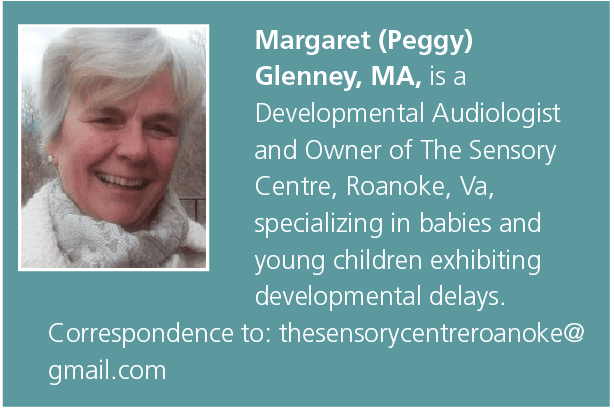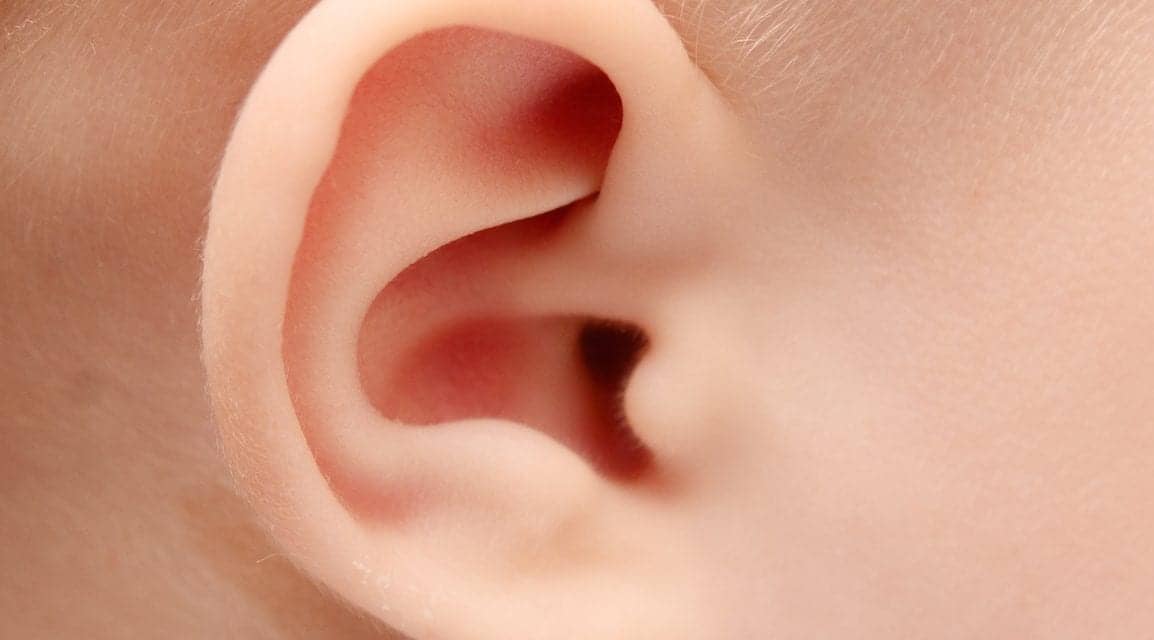Opinion| January 2022 Hearing Review
By Margaret R. Glenney, MA
We are just shy of three decades since the National Institute of Health (NIH) issued a consensus statement that all infants should be screened for hearing loss by three months of age.1 It has largely become routine that infants are screened before discharge from the hospital, however, rarely is this screening done by an audiologist, even with high-risk newborns. Furthermore, hard data are rarely available. Most parents are given a paper with a Pass/Fail report. This is primarily due to the automation of otoacoustic emissions (OAE) and auditory brainstem response (ABR) screening equipment. However, unlike the years preceding, when high-risk newborns were almost always seen by an audiologist who would take a case history and had the discretion to see the infant back as needed, the present situation effectively cuts audiologists out of newborn and high-risk newborn assessment protocol. In addition, in most states, audiologists are rarely employed as part of early intervention programs.
Prior to all this automation, how did audiologists assess high-risk newborns? Frequently, the infant was put in the sound booth, and the audiologist made an assessment of response to sound based on two primitive reflexes that emanate from the auditory and vestibular systems (among other systems) in the brain: the startle reflex and the sucking reflex. There is a plethora of research indicating that retained/non-integrated primitive reflexes are associated with all types of learning disorders2 including, but not limited to, developmental language disorder,3 dyslexia,4 and attention deficit disorders (ADD), and attention deficit hyperactivity disorders.5 Kraus and Anderson6 have stated that auditory processing is fundamental for reading development. In addition, there is much research that indicates that children with a variety of labels have aberrations and deviations in auditory neural function at various points along the auditory neural pathways in the brain.7
In 2018, the British Society of Audiology stated “There is an urgent need for validated and standardized questionnaires for mapping children with listening difficulties under 6 years of age…”8 Furthermore, Beck and Flexer9 persuasively assert that hearing and listening are different matters. Their chapter in the Handbook of Acoustic Accessibility: Best Practices for Listening, Learning, and Literacy in the Classroom titled “Hearing Is the Foundation of Listening— and Listening Is the Foundation of Learning” speaks to the importance of differentiating hearing from listening.
But, who is assessing developmental listening skills in infants and young children?
Learning to hear or listen involves multisensory integration of, at minimum, the somato-sensory, visual, auditory, and vestibular systems. There is good reason to believe, based on Moller and Rollins’ work,10 that auditory development involves the calming of the non-classical auditory pathways, which involve some of the primitive reflexes, in order for the classical auditory pathway to mature. Musiek et al,11 in discussing this work and the development of the auditory system, asserts that the non-classical pathway is too great to be ignored. Hearing is one of the five senses; listening is a learned skill, and much like the renown “McGurk effect” illustrates, multisensory integration is also learned. As Edith Whetnall beautifully explains in her book, Learning to Hear,12 listening is a learned process—a critical process in the overall development of a child.
Learning to hear is arguably a multi-sensory neuro-developmental process in children. And, as Myklebust stated 50 ago, “Parents are often not aware of the auditory disorders in their children until the symptom of lack of speech development appears.”13 Infants begin learning to hear at approximately 18 weeks gestation. As they progress, they will prefer their own mother’s voice to the sound of another female within days of birth, learn to localize to sound, and learn that their body position affects what they can hear. This learning takes place within the first year of life, well before the child utters their first word.
Audiologists are usually aware of the impact of auditory deprivation which occurs with otitis media and effusion, either transient or long term, but perhaps are not aware that there has been a 150% increase in incidence of otitis media since 1980 and a 224% increase in children under 2 years of age.14 In addition, the ubiquitous “screen time” is now being seen as detrimentally effecting auditory development. In the United States today, nearly 1 in 6 children are now diagnosed with some type of developmental disability, with ADD being the most common diagnosis.15
Learning to hear is a multifaceted complicated process involving numerous sensory systems. Hallowell Davis wrote:
My own point of view concerning the complexity of the central nervous system is as follows: Everything is more complicated than you think. Don’t try to give premature anatomical and physiological explanations (pseudo-explanations) of empirical clinical phenomena. Anatomical speculations may be useful in formulating hypotheses for further experimentation and as such they are tools for the physiologist and the experimental psychologist. Anatomical diagnoses are the business of the neurologist, the neurosurgeon, and finally the pathologist. But anatomical speculations are not a legitimate basis for making decisions concerning education and rehabilitation. They are too likely to lead to rigid or to oversimplified patterns of thinking. They are usually incapable of validation. They distract the mind from the empirical clinical observations and the generalizations from the observations that are the proper basis for practical decisions.16
An unintended consequence of the newborn hearing screening program at present seems to be twofold:
- That passing an automated test of neural integrity in the cochlea or lower brainstem is a “comprehensive screening test” for newborns, and
- That children with developmental delays, including children with speech and language delays, need no further evaluation by an audiologist as their newborn hearing screening was passed.
It seems that many children with these labels can have listening or auditory neuro-developmental delays or disorders. Audiologists need to be involved in the assessment of auditory competence and development in infants and children manifesting developmental delays.

Citation for this article: Glenney M. Children and hearing loss: Who has a label? Hearing Review. 2022;29(1):10.
References
- NIH Consensus Statement. Early identification of hearing impairment in infants and young children. The National Institutes of Health Consensus Development Conference on Early Identification of Hearing Impairment; March 1-3, 1993.11(1):1-24.
- Bilbilaj S, Gjipali A, Shkurti F. Measuring primitive reflexes in children with learning disorders. Euro J Multidisciplinary Studies. 2017;2(5):285-298.
- Matuszkiewicz M, Gałkowski T. Developmental language disorder and uninhibited primitive reflexes in young children. J Speech Lang Hear Res. 2021;64(3):935-948.
- McPhillips M, Jordan-Black JA. Primary reflex persistence in children with reading difficulties (dyslexia): A cross-sectional study. Neuropsychologia. 2007;45(4):748-754.
- Konicarova J, Bob P. Retained primitive reflexes and ADHD in children. Activitas Nervosa Superior. 2012;54(3-4):135-138.
- Kraus N, Anderson S. For reading development, auditory processing is fundamental. Hear Jour. 2013;66(9):40.
- Glenney MR. A discussion of children with obvious hearing and balance disorders being mislabelled in the psycho-neuro-developmental and educational world: An historical analysis. Hearing, Balance and Communication. 2019;17(2):127-131.
- Moore DR, Campbell NG, Rosen S, et al. British Society of Audiology Position Statement and Practice Guidance: Auditory Processing Disorder (APD). https://www.researchgate.net/publication/324437594_Position_Statement_and_Practice_Guidance_Auditory_Processing_Disorder_APD. Published February 2018.
- Beck DL, Flexer C. Hearing is the foundation of listening— and listening Is the foundation of learning. In: Smaldino JJ, Flexer C, eds. Handbook of Acoustic Accessibility: Best Practices for Listening, Learning, and Literacy in the Classroom. 1st ed. Thieme;2012.
- Moller AR, Rollins PR. The non-classical auditory pathways are involved in hearing in children but not in adults. Neuroscience Letters. 2002;319(1):41-44.
- Musiek F, Mohanani A, Wierzbinski E, Kilgore G, Hunter J, Marotto J. The non-classical pathway: Too great to be ignored. Hear Jour. 2011;64(10):6-8.
- Whetnall E, Fry DB, Niven BB. Learning to Hear. 1st ed. Butterworth-Heinemann Books;1970.
- Myklebust HR. Auditory Disorders in Children: A Manual for Differential Diagnosis. Grune & Stratton;1970.
- Nsouli T. Expert interview: Serous otitis media and acute otitis media (middle ear infections). Better Health USA website. http://www.betterhealthusa.com/public/212.cfm.
- Boyle CA, Boulet S, Schieve LA, et al. Trends in the prevalence of developmental disabilities in US children,1997-2008. Pediatrics. 2011;127(6):1034–1042.
- Davis H. Occam’s razor and congenital aphasia: The formulation of hypotheses. Psychosom Med. 1962;24(1):81-84.





